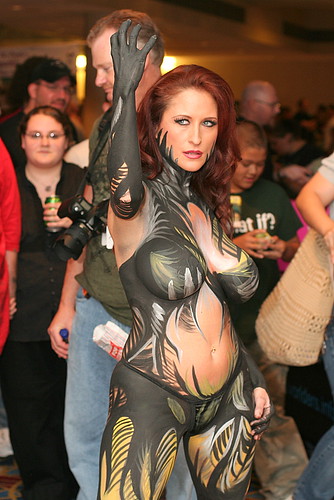skip to main |
skip to sidebar
Black Hair Texturizer Pictures
Hair plays a very complex role for black women. Paulette Caldwell, a law professor writes, "I want to know my hair again, to own it, to delight in it again, to recall my earliest mirrored reflection when there was no beginning and I first knew that the person who laughed at me and cried with me and stuck out her tongue at me was me. I want to know my hair again, the way I knew it before I knew that my hair is me, before I lost the right to me, before I knew that the burden of beauty – or lack of it – for an entire race of people could be tied up with my hair and me" (Crawford, 9). Caldwell illustrates how her identity has become dependent on her hair and how she yearns to separate the two in order to once again have her own identity, one in which hair does not play a role. Because of how strongly society connects a black woman's hair to her identity, it is understandable why black hair care has developed into a 9 billion dollar business. In Good Hair, Rock explains how a black woman's hair can affect her daily activity (avoiding activities that may cause her hair to get wet and ruining her weave), wallets (weaves can cost thousands of dollars), and sex lives (men are forced to accept a "hands-off" policy). Rock explains that because a black woman's hair is such an investment, men are often not allowed to touch it during sex. Rock says, "...You are conditioned not to even go there. When I was a dating guy, I dated women from different races. Anytime I was with an Asian or a Puerto Rican girl or a white girl, my hands would constantly be in their hair. Like my hands were thirsty." The type of hairstyle that a black woman has can sometimes act as a predictor of what she is willing to do (The Oprah Winfrey Show). An example of this is seen in when examining the economy during the end of March 2009 when the unemployment rate doubled for married couples with children under the age of eighteen (Crawford, 6). During this time, white middle class women were observed trying to save money by frequenting salons less and purchasing home dye kits. In a study of one thousand women who visited hair salons to dye their hair, 15% claimed to purchase home dye-kits instead. There was also a report of a 20% increase in sales of Root Touch-Up by Clairol. These are the type of products marketed for white women (Crawford, 7). Black women during the same period, however, were observed to be less affected by the falling economy. One possible reason for this could be because salons have a different role for African-American women than white women. They serve as a support system that enables the women a sense of normalcy in the poorer times (Crawford, 9). Society also creates a strong bond between a black woman's identity and her hair. The main focus in the film is the extreme lengths that black women are willing to go through in order to look a certain way. A common ideology in the African American culture is that the straighter the hair, the prettier the woman. On the contrary, a woman wearing her hair naturally (with no chemical processing) is viewed as unkempt or unprofessional. Black women are willing to spend thousands of dollars on their hair, even if they cannot afford to do so. According to Rock, he was prompted to make the movie after his 5-year-old daughter Lola asked him, "Daddy, how come I don't have good hair?" During the film, Rock delves into the $9 billion black hair industry, and visits such places as beauty salons, barbershops, hair styling conventions and scientific laboratories (to learn the science behind chemical relaxers that straighten hair). Good Hair is a 2009 American comedy documentary film produced by Chris Rock Productions and HBO Films, starring and narrated by comedian Chris Rock. Premiering at the Sundance Film Festival on January 18, 2009, Good Hair was released to select theaters in the United States by Roadside Attractions on October 9, 2009, opening across the country on October 23. The film focuses on African American women's hair, including the styling industry surrounding it, the acceptable look of African American women's hair in society, and the effects of both upon African American culture. Black women being defined by their hair is not a new concept in media. In Simi Bedford's Yoruba Girl Dancing, Remi is a young girl who has beautiful hair that is well cared for. However, when Remi must go to England for boarding school, her grandmother wants her to cut off her hair because the Europeans won't know what to do with it. Because Remi's hair is cut off, part of her identity gets striped from her when the Europeans cannot tell whether Remi is a boy or a girl (Crawford, 9).































